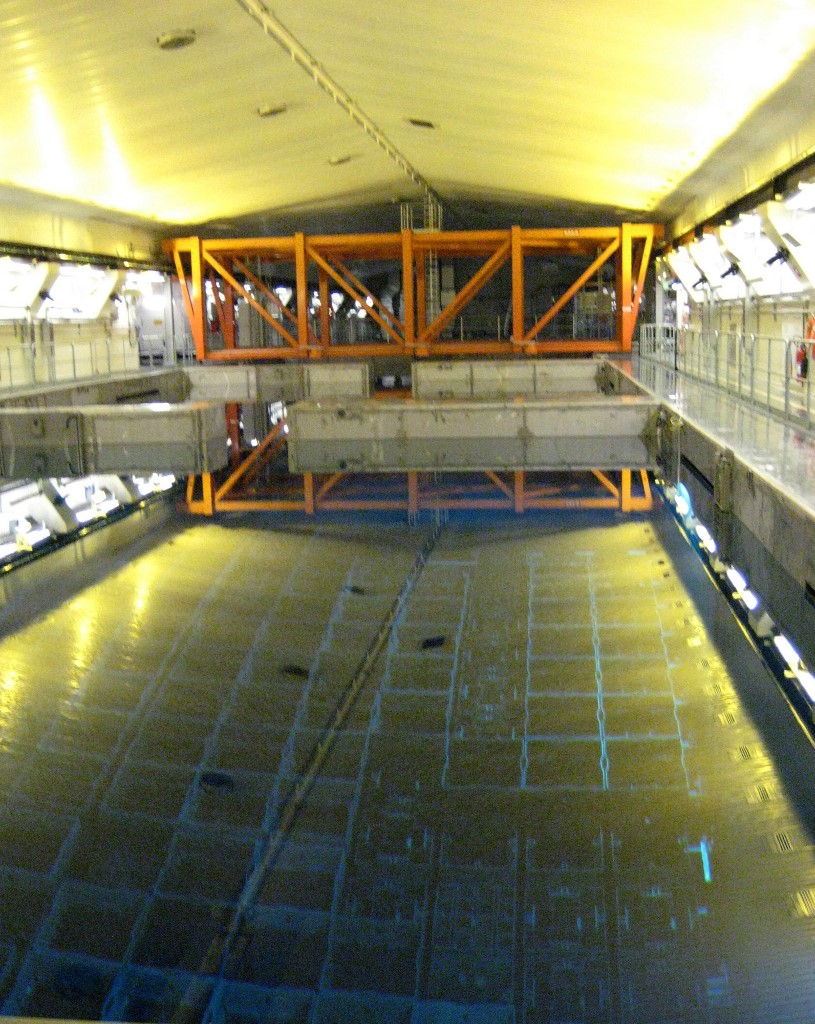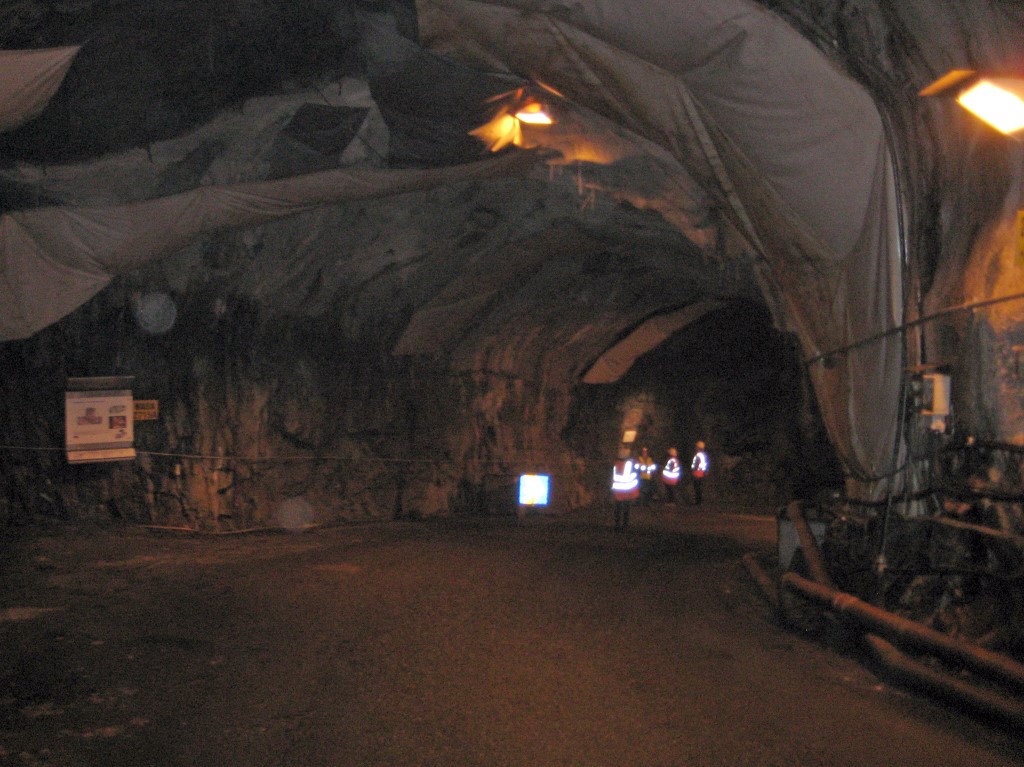
(FILES) —A file picture taken on May 14, 2009 shows an undergroung nuclear waste treatment tank in the southeastern Swedish town of Oskarshamn. At the Aespoe Hard Rock Laboratory in Oskarshamn, researchers are using an underground maze of four kms (2.5 miles) of tunnels to test methods to enable Sweden to become the first country in the world to bury spent nuclear fuel for hundreds of thousands of years. The Swedish Nuclear Fuel and Waste Management Company (SKB), an independent company owned by nuclear power plant operators, has built the Forsmark site, some 200 kms from Stockholm, for its final repository for high-level spent nuclear fuel from Sweden’s 10 reactors. (Photo by PIA OHLIN / AFP)
STOCKHOLM, Sweden (AFP) – Sweden’s government on Thursday announced it was approving a plan to provide a final storage place for radioactive spent nuclear fuel by burying it in metal containers deep in bedrock.
The site of the final storage will be a facility in Forsmark, which is also the home of one of Sweden’s three nucelar power plants, about 130 kilometres ( 81 miles) north of Stockholm.
“We are doing this to take responsibility, both for the environment and for people, but also for Sweden’s long-term electricity production and Swedish jobs,” environment minister Annika Strandhall told a news conference.
The solution, which also needs approval from Sweden’s environmental court, is called KBS-3 and has been decades in the making.
It relies on placing the waste in iron casings surrounded by massive copper tubes which are slid into crystalline rock in a tunnel 500 metres (1,640 feet) underground and then sealed in with bentonite clay, thereby creating several barriers to protect against the radiation escaping.
“With today’s decision we, together with Finland, become world-leading in this area,” Strandhall said.
The Swedish-developed technology is also being employed at the Onkalo spent nuclear fuel repository being constructed in Finland’s Eurajoki.
The site is due to receive the first test shipments in 2023 and be operational in 2025.
The Swedish project is being carried out by SKB, a company set up by the Swedish nuclear power producers to manage waste.

Workers are seen on May 14, 2009 in a dark, damp tunnel deep in the rock, where groundwater trickles down the granite walls in the southeastern Swedish town of Oskarshamn. At the Aespoe Hard Rock Laboratory in Oskarshamn, researchers are using an underground maze of four kms (2.5 miles) of tunnels to test methods to enable Sweden to become the first country in the world to bury spent nuclear fuel for hundreds of thousands of years. The Swedish Nuclear Fuel and Waste Management Company (SKB), an independent company owned by nuclear power plant operators, is due to select a site sometime in June 2009 for its final repository for high-level spent nuclear fuel from Sweden’s 10 reactors.(Photo by PIA OHLIN / AFP)
SKB hailed the “historic decision” while Greenpeace deplored it as one decision with “100,000 years of consequences”.
The environmental NGO accused the government of ignoring “heavy criticisms from independent scientists” who “have shown that the copper capsules risk corroding much faster than foreseen”.
Some of 7,500 tonnes of spent nuclear fuel is currently being stored at the mid-term storage facility in Oskarshamn on Sweden’s east coast where the decision was welcomed by the municipality.
“It’s been 44 years since our municipality approved the mid-term storage with the reservation that it absolutely should not be seen as any final storage,” Oskarshamn mayor Andreas Erlandsson said in a statement.
“I welcome that we now have an environment minister who has taken her part of the responsibility,” he added.
© Agence France-Presse







